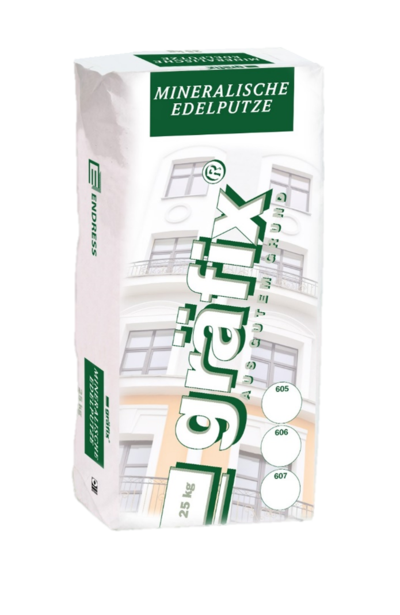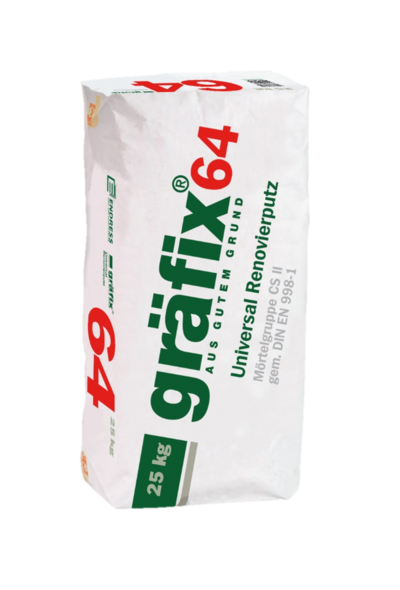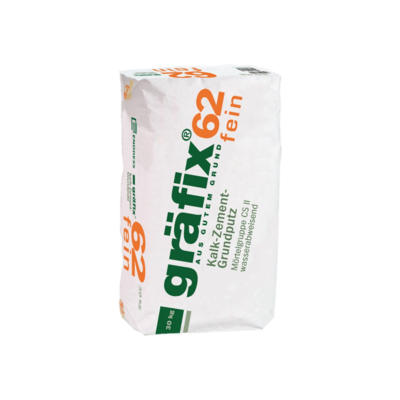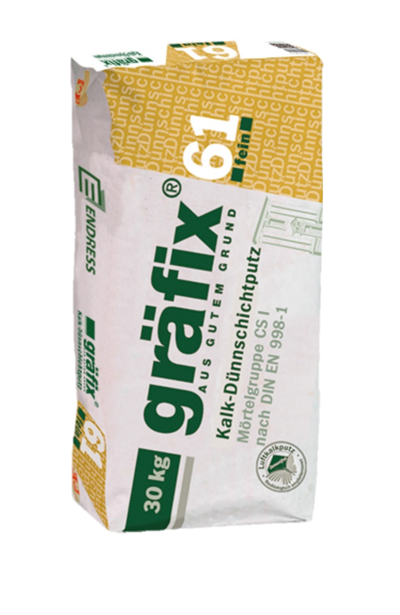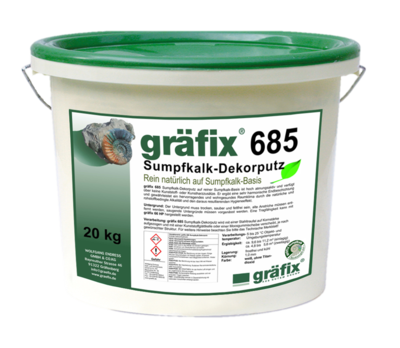gräfix 606
Fine felt plaster
CR CS II - mineral plaster for any surface design or fine felt texture
Resistant, mineral interior and exterior plaster which, thanks to its composition of lime, cement and carefully dosed calcite grains, as well as mineral colour pigments, is ideal for felting and designing wall surfaces with a variety of textures. Ideal for reveals, soffits etc.
Delivery: 25 kg bag
Grain size: 0 - 0.8 mm
- Normal plaster mortar according to DIN EN 998-1
- Mortar group: CR CS II
- for free structuring or felting
- grain size 0 - 0.8 mm calcite grains
- Supplied in 25 kg paper bag
- Processing time: approx. 1 hour
- Standard colour: white
- Not suitable for ETICS
- Yield: at 2 mm approx. 8.8 m² per bag/25 kg
- Very calcareous, mineral plaster
- Can be applied by hand and with a plastering machine
- For felting and free texturing
- open to water vapour diffusion
- water-repellent
- Indoors and outdoors
- for walls and ceilings
- Colouring with lightfast colour pigments
- Remove coatings that restrict adhesion
- Pre-wet the substrate/masonry accordingly
- Roughened, set base plasters serve as substrates
- Prime the plaster base with Rabolin 160; 617 or 689
- for gypsum plasterboard or substrates prone to staining, prime with Rabolin 165 Isogrund
- Mix one bag of gräfix 606 with approx. 5.5 - 6 litres of water
- Stir well again after 5 minutes
- apply evenly with a felt or smoothing disc 1 - 2 mm without leaving any build-up
- Structure: after stiffening, felt or structure freely
- Yield: with 2 mm plaster thickness approx. 8.8 m² per bag/25 kg
- Observe technical data sheet!
- Technical data sheet ► (EN)
- Safety data sheet ► (EN)
- Declaration of performance ► (EN)
- Brochure "Plasters, lightweight plasters, finishing plasters"
Mineral finishing plasters
Texturising, mineral finishing coat with grain size
Mineral finishing plasters are used to design wall and ceiling surfaces. In addition to texturing grain sizes, UV-resistant mineral colour pigments are used in production.
Thin-layer finishing plasters are usually rubbed down to grain size.
Thick-layer finishing plasters, such as the classic scratch plaster, are applied more thickly and scratched back.
Please refer to the information sheet "Levelling coats on decorative plasters"

